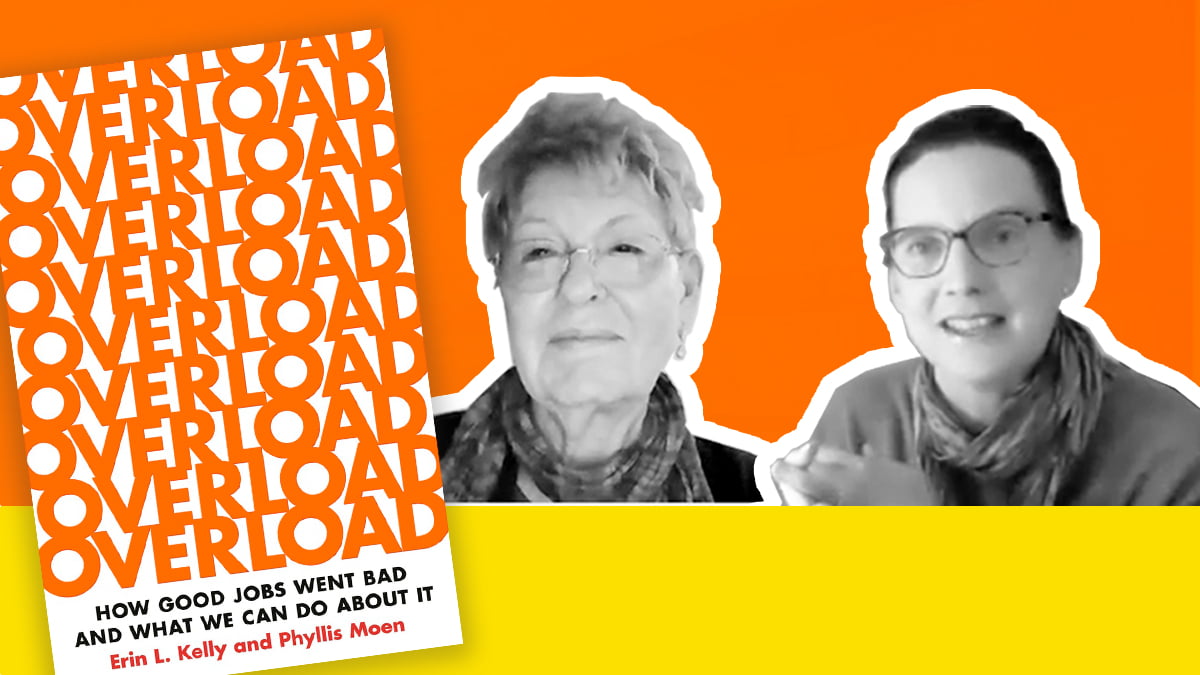Today’s ways of working are not working―even for professionals in “good” jobs. Responding to global competition and pressure from financial markets, companies are asking employees to do more with less and new technologies are normalizing a 24/7 work day.
In Overload, Erin Kelly and Phyllis Moen document how the intensification of work creates chronic stress and leads to burnout. “Flexible” work policies and corporate lip service about “work-life balance” don’t come close to fixing the problem. But this unhealthy and unsustainable situation can be changed.
Kelly and Moen joined Sarah Kaplan to discuss their new book, Overload: How Good Jobs Went Bad and What We Can Do About It, based on five years of research, which involved surveying over a thousand employees and managers at a Fortune 500 firm. This experiment helped design and implement a “work redesign treatment”, allowing the company to adopt creative and practical approaches that gave workers more control over how and where they worked and encouraged managers to evaluate performance in new ways. Kelly went on to explain the success of their findings. “The employees in the treatment group reported less psychological distress and burnout. The company benefited because those employees were more satisfied with their jobs and fewer were planning to quit. We found a 40% smaller exit rate in the treatment group compared to the controlled group. Work-life-conflict also improved for moms and dads.”
Why are we experiencing an increased level of stress and burnout at work?
Employees are being asked to tackle too much at work and feel rushed and overwhelmed. In an effort to trim labour costs, organizations are cutting staff, shifting work offshore and automating processes. This results in less workers collaborating on projects and the workers who remain having to do more with less. Additionally, technology offers opportunities for managers, clients and peers to reach employees at any hour of the day or night, creating a workday that has no end.
Why is framing burnout around work-life-balance problematic?
Conversations about work-life-balance implicitly put the onus on the individual to figure out how to have their personal needs met. However, the issue is an organizational one, according to Kelly and Moen. Work-family-conflict is not the root issue, it is the intensification of work. Organizations need to revisit outdated conversations around flexibility, especially when considering “accommodations” to working mothers and parents.
How can we avoid overload?
New work strategies can decrease burnout, increase worker satisfaction, and help you keep your best people. Kelly and Moen offered insight towards actions that organizations can take to reduce workplace related stress and burnout:
- Manage the work, not the worker. Turn the focus to the results, not when, where and how it is done. By offering more control to employees to dictate their working conditions, managers can benefit as well, since they don’t have to micromanage and can focus on completing their own work.
- Get rid of low value work, such as meetings with no agendas, the report that are done which no one reads, etc. This will help free up time to make people more efficient.
- Honour, respect and take account of workers’ private lives. This has been enhanced by COVID-19. We now have a glimpse of people’s home life through our video interactions and encounter children, spouses and dependants . We can no longer deny that workers need time to support these home environments.
- Have honest conversations about capacity and create a team culture where this is the norm.
Watch Kelly and Moen discuss why elevated stress is becoming a trend in the workplace and what we can do about it.
Or register below for these upcoming events




